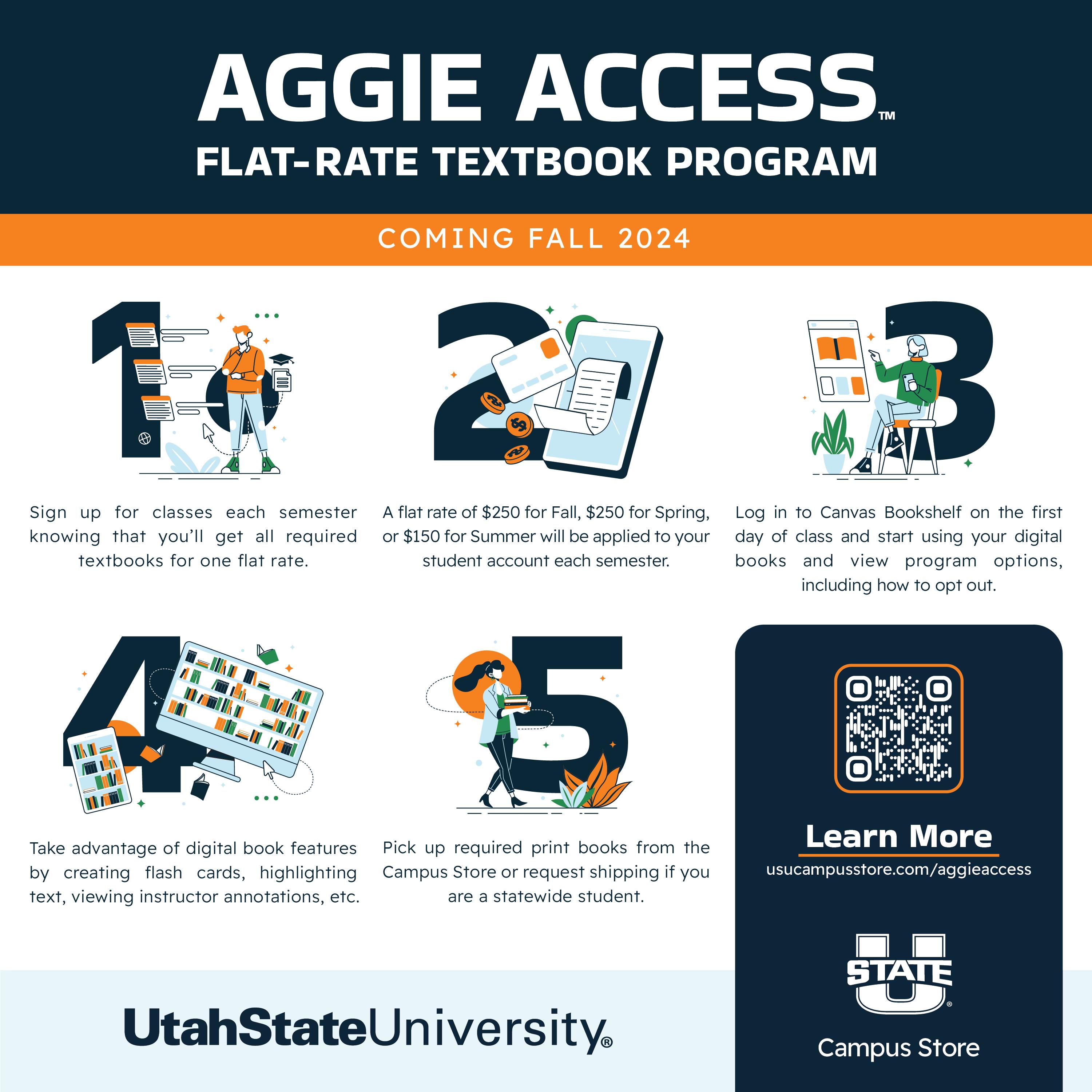

04



04
Nine Utah State University students experienced an hour in a wheelchair as part of their SPeD 5500 Interdisciplinary Disability Awareness and Community-Engaged Learning class.
The students began at the Institute for Disability Research, Policy and Practice building, where they borrowed wheelchairs and traversed around campus, traveling to the Junction, across several crosswalks and through the cemetery. Potholes, uneven ground and sidewalk curbs with no curb cuts proved difficult to maneuver, as well as the steep ramp up to the Junction.
“We just didn’t realize there were so many obstacles present in our community,” said Anja Cieslewicz, a student who participated in the experience.
Another major hurdle? Heavy double doors to enter buildings.
“There’s quite a few doors on campus that don’t have the automatic push buttons, and it was kind of a struggle,” Cieslewicz said.
Although there were kind-hearted people not involved in the experience who wanted to help the students through the doors, the students had to refuse their assistance and open the doors themselves. To enter the door, they had to place one hand on the door handle and push the door open as the other hand was pushing a wheel to move the wheelchair into the building.
Mary Ellen Heiner, the class instructor, gave a student a pressure gauge to test the amount of force needed to open the front door of the IDRPP building. It took nine pounds of pressure.
Most doors on campus do not meet the Americans with Disabilities Act (ADA) standard of five pounds of force to open the door, said Heiner. The doors are heavy, and without help, it’s awkward and difficult to enter a building.
Some of the wheelchairs were more suited than others for the often treacherous journey through campus, with bigger wheels or more traction on the wheels.
“Uh oh, you’re off-roading,” one of the participants said as a wheelchair veered off the sidewalk into the grass.
Most sidewalks aren’t completely flat, as there is a cross slope allowing for drainage into the curb. However, if the slope is above 2%, it can make it difficult for wheelchairs to travel down the sidewalk.
“I obviously knew being in a wheelchair was hard, but I didn’t realize it was that hard,” said Maren Thomson, a student who participated. “I didn’t realize how steep the ramps were. Or, you think that a sidewalk is flat, but it’s actually really steep.”
Thomson recently got surgery on her ankle and has been experiencing campus in a different way.
“I’ve been on crutches for a couple weeks and then I had a little knee scooter for a couple of weeks,” she said. Thomson has had ankle problems since high school and a surgery last year didn’t fix them, so she had surgery again. Thomson said in some ways it was easier to travel with a wheelchair, because she had more accessibility with her hands, but in other ways it was more difficult.
“You have zero mobility with your feet. So a wheelchair is different because you can’t cut corners as easy or go in tighter spaces,” Thomson said.
In Thomson’s words, the experience was ‘insightful.’
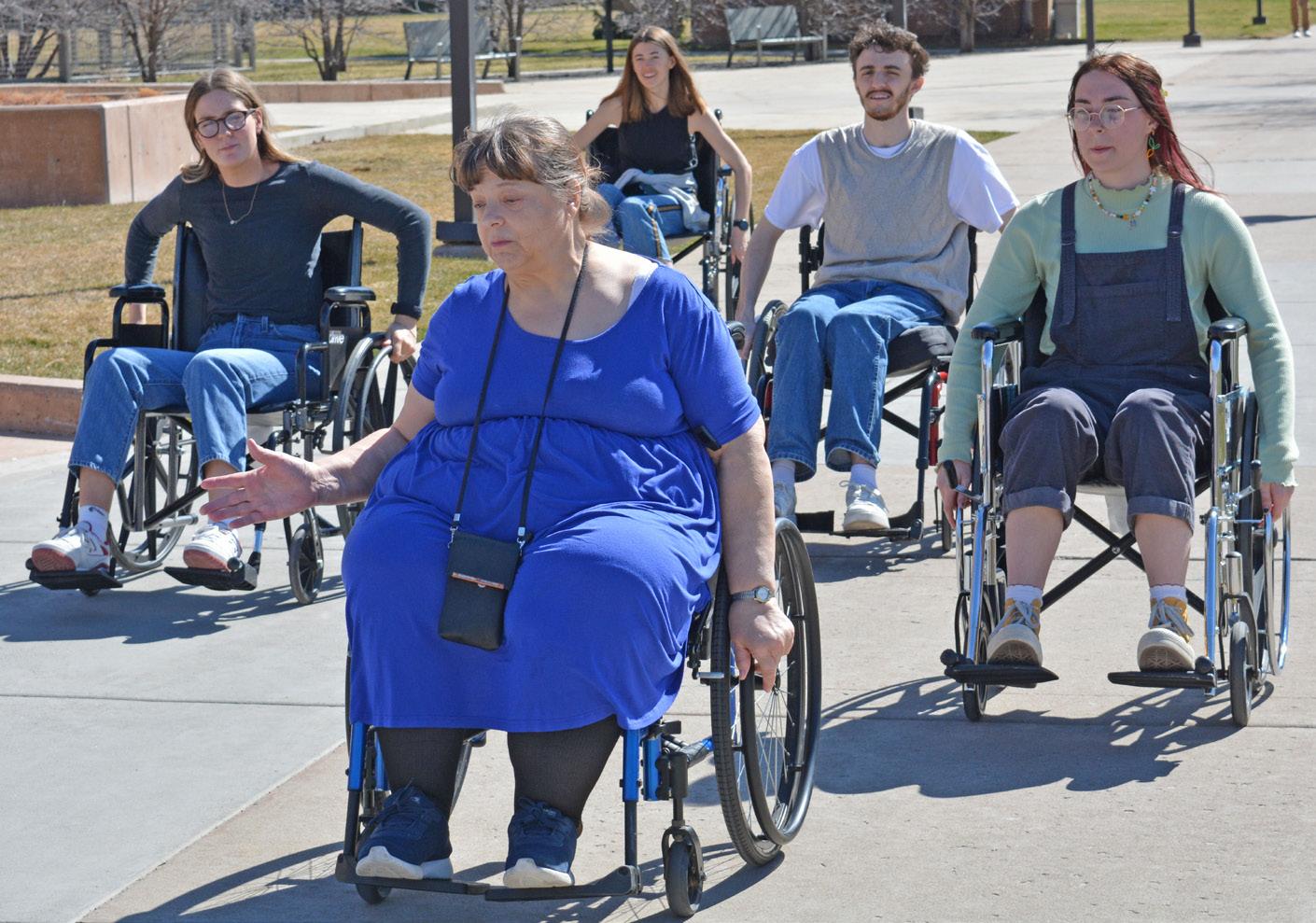

“The purpose for this wheelchair exercise is to make you aware of the barriers that people in wheelchairs face so that you can do something about them,” she said.
Opening a door, a sloped pathway or cracks in the sidewalk are just a few simple examples of barriers people may not think about if they’re not in a wheelchair.
Instead of treating everyone like ‘normal’ people, Heiner said to treat everyone as people.
“None of the buildings on campus are actually fully ADA accessible,” Cieslewicz said. “Even just making those bare minimum requirements could go a long way to making sure that the ramps aren’t too steep and the doors aren’t too heavy to push open.”
Heiner said architects often want something to look aesthetically pleasing, sacrificing functionality. Courtyards and sidewalks with large cracks may look pretty, but make it easy for wheelchair wheels to get caught.
One hour isn’t enough to experience what life is like in a wheelchair, said Heiner. Because of a farming accident as a child, Heiner herself has been on crutches or in a wheelchair for several decades.
“I’ve told my students I don’t ever, ever, ever want them to refer to somebody as normal,” Heiner said. Heiner spoke about a time when she had to enter a restaurant through the back door and go through the kitchen, as it was the only wheelchair accessible entrance. Another time she went to a hotel claiming to have a wheelchair friendly room, but it was on the second floor with no elevator. Heiner ended up sleeping on a mattress on the ground, as the bed was too high for her to get into.
“We hear a lot about inclusive,” Heiner said. “It’s so much more than just inclusion. It’s belonging. You can include somebody but you don’t have to make them feel like they belong.”

Reagan Thomas is an avid news junkie studying journalism and political science. When not perusing the latest stories of the day, she enjoys running, hiking and stargazing.
— reagan.thomas@usu.edu
On March 22, Aggies gathered in the Nelson Fieldhouse to celebrate the annual Aggiethon hosted by USU’s Miracle Club. The event is a dance marathon turned block party that raises money for Primary Children’s Hospital.
The Miracle Club, previously named Aggiethon Club, was re-established in January of 2023 and is a club entirely dedicated to philanthropy work for Children’s Miracle Network Hospitals as well as Primary Children’s.
After being on hiatus due to the pandemic, Aggiethon returned this spring semester. In past years, around $35,000 was often raised at each Aggiethon. Miracle Club was hoping to raise around $20,000 this year, but fell short.
At the end of the night, Miracle Club members marched out with paper signs and revealed down the line a total of $16,020.24 raised. This is a little more than half of what has been raised in previous years.
The Nelson Fieldhouse was filled with nine-square, tug-of-war, musical chairs, free pizza and more. There was no cost of entry, and all were welcome.
The dance marathon part of the event was led by USU student and Miracle Club member Janeal Rydalch. Throughout the evening, those in attendance would gather to the front of the fieldhouse where she would teach a dance to a mashup of songs that she remixed herself. Each section built upon each other to create one choreographed dance at the end of the night. Students were also free to dance during
the ‘dirty thirty’ at the beginning of the night, and live music preformance.
When not dancing, playing games or enjoying free food, Aggies listened to speakers. The three speakers were 13-yearold Nellie, 6-year-old Leo, and 12-year-old Hank, all of whom shared stories of their time at Primary Children’s. Each reminisced about the music and art therapy they had all taken part in during their hospital stays.
“No child should need to spend time in the hospital. But if they have to, Primary Children’s is a pretty awesome place,” said Hank’s father.
Children’s Miracle Network program director Julia Saxton attended the event as a representative from the hospital. She explained that the dance marathon is a national movement and that Primary Children’s serves the largest geographical area of any hospital in the country.
Julia got involved with Primary Children’s while in college studying journalism and later pivoted from her major to continue work in the healthcare field.
“It’s really hard to get around Primary Children’s and not fall in love with it, because the mission of keeping the child first and always is so important in today’s society, and in a world where very few things feel like they matter anymore, this work does.” Saxton said.
Chelsey Crowne, cause partnership manager for Children’s Miracle Network, helped lead the event and headed donation pushes, which is where those at the event would call, text and post, asking for donations.
“I did dance marathon myself as a stu-
dent at San Diego State University. My best friend died of cancer when I was in high school, and dance marathon for me became an outlet to honor and remember her while making a difference for other kids that are in that same position,” Crowne said.
After each donation was made, Aggies were allowed to celebrate by banging a drum once for each time they raised $8. If they raised $16, they would bang the drum twice, and so forth. This was to celebrate the eight years it had been since Hank had his heart transplant.
The evening also saw live music performances from Aggie Voice winner Libby Prusso, who performed a cover of Circles by Post Malone as well as local band Wednesday, which is made up of members of the Logan campus social media group Overall Wednesday.
“I believe in the goodness that this creates and the culture that perpetuates of caring about something that’s bigger than ourselves,” Saxton said.

Malory Rau is a sophomore studying social media, public relations and marketing. When not skateboarding with friends, she is usually thrifting, reading or seeing the latest movie.
— m.rau@usu.edu


The Jewish population is a small fraction of Cache Valley’s cultural and religious makeup, and the lack of synagogues or kosher markets lining the streets reflects the invisibility of this minority. Jewish faculty and students at Utah State University are building an inclusive environment for the Jewish community in Logan through the Jewish Inclusion Seminar series.
The series was a three-day event from March 25-27 featuring speakers, films and presentations meant to reflect the diverse experience of Jewish people from all backgrounds.
The series aimed to continue the success of the first annual Jewish inaugural event in 2023, which focused on identity and empowerment. This year’s event included three workshops.
Ronen Sebag, the senior advisor for inclusive excellence with the Division of Diversity, Equity and Inclusion, was the primary organizer of the series.
“We did the inaugural seminar series last year and there were two focal points,” Sebag said. “One was Jewish identity, and the other was talking about the unfortunate reality that we’ve been witnessing for several years, which is the rise in anti-semtism. We discussed manifestations of anti-semitism and ways to address it on and off campus.”
The first event garnered enough attention and people to make the series into an annual occurrence.
“It was very well received,” Sebag said. “Individuals from the Jewish community here in the valley attended, and many more who are not a part of the Jewish community attended, which is also our objective — to create connections and understanding.”
This year’s series event was a celebration of the diverse array of voices making up the community.
“The students felt that it was equally important to highlight elements that are typically not known about the Jewish community,” Sebag said. “We listened, and we decided to highlight the cultural and traditional aspects of Judaism not just as a religion, but as a whole.”
According to Sebag, people often view Jewish culture two-dimensionally and don’t recognize its inherent complexity.
“Judaism is a religion, a tradition and a people,” Sebag said. “It’s many things, and it depends on who you ask. Research shows there’s a vast continuum of how individuals identify themselves within the Jewish community.” Judaism is sometimes associated strictly with religion. However, according to Pew Research Center, only 17% of Jewish people aged 18-29 identify as Orthodox, while 41% claim no particular affinity for American Judaism. The goal of this year’s series was to provide a new level of depth previously misunderstood in an area like Cache Valley.
“The more we know about each other, the deeper we understand each other’s identities,” Sebag said. “We un-

derstand things that are important to us as individuals, across groups, across cultures and across traditions. Oftentimes that melts away implicit stereotypes.”
Sebag identifies as a Mizrahi Jew. Sephardi and Mizrahi Jews draw their cultural heritage from the Middle East, North Africa and Spain and represent distinct subcultures of Judaism. Ashkenazi Jews are the predominant ancestral group throughout Europe and the United States.
“Sephardi, Mizrahi and Ashkenazi traditions and cultures are equally beautiful and rich,” Sebag said. “It’s just that the Sephardi and Mizrahi traditions have not gotten their due representation.”
According to Jewish Virtual Library, only 0.2% of Utah’s population is Jewish. As a result, Jewish people are underrepresented, and those from non-American or from Ashkenazi backgrounds are often not represented at all. The series aims to alleviate this problem by featuring all subgroups.
“It represents the multifaceted diversity within the Jewish universe,” Sebag said. “That’s the objective: to show the diversity of Jewish culture, of the Jewish experience and of Jewish voices.”
Monday’s presentations featured Yael Gidanyan and Roni Fantanesh Malkai, encompassing Jewish-Ethiopian and Jewish-Iranian experiences. Tuesday focused on Jewish-Americans with speakers Judith Amsel and Eric Mendelsohn.
Amsel, a board member of the United Jewish Federation of Utah, discussed Jewish mothers and daughters for her presentation.
“It’s a very personal, kind of anecdotal presentation,” Amsel said. “Having been both a Jewish daughter and a Jewish mother, it was easy for me to speak to that.”
Amsel’s presentation tackled different stereotypes surrounding Jewish families and family dynamics.
“Stereotypes need to be understood as coming from a particular perspective at a particular place of time,” Amsel said. “At times, those stereotypes simply need to be imploded. It helps to explain why Jews may be perceived the way they are or why they perceive themselves the way they do.”
Amsel moved from Ohio to New York City to Ogden, where she said a small but active Jewish community thrives.
“The community has remained small, but it’s very vibrant,” Amsel said. “It seems counterintuitive, but by coming out here we were able to be in a place where it matters if you show up on a Friday night for services.”
The Church of Jesus Christ of Latter-day Saints majority in Utah has posed unique situations for other practicing religious groups emigrating from states who aren’t as closely tied to faith.
“We had no idea what it meant for LDS to be the dominant culture until we moved here,” Amsel said. “For example, when we want to go see plays in Salt Lake City, the FrontRunner doesn’t run on Sundays. The fact that I celebrate my Sabbath on Saturday means I have to make adjustments to the way I observe the Sabbath.”
As part of the United Jewish Federation of Utah, Amsel is working to increase the visibility and opportunity of Jewish people. The federation distributes funds and helps kickstart initiatives like the Hillel Program.
“Hillel is a program for college students which puts on Friday night Shabbat dinners, have speakers and provide support for students,” Amsel said. “The program in Utah is pretty much restricted to Salt Lake City.”


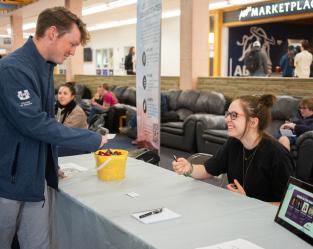 By Essence Barnes LIFESTYLES REPORTER
By Essence Barnes LIFESTYLES REPORTER
Utah State University celebrated Natural Resource Week, with five days of events from March 25-29 showcasing the S.J. and Jessie E. Quinney College of Natural Resources.
Nathan Omer, the college senator, coordinated this year’s events.
“The focus of the college is obviously natural resources, and ways that we can better utilize and manage the resources that we have,” Omer said.
The week was filled with a variety of events to highlight the importance of natural resources, including yoga, planting flower pots, a trivia night and a campfire at Green Canyon.
“Our events try to span what we feel most students like to do,” Omer said. “We’re also trying to spend as much time outside as we can.”
QCNR partnered with the College of Science and the College of Engineering to hold the You Belong in STEM & natural resource science fair.
“I think a lot of people don’t realize that there’s a lot of science that goes on in natural resources,” Omer said. “We have tons of research going on.”
The science fair gave students a glimpse into what it is like to be a STEM student, and it highlighted the student research and academics going on within the field of natural resources.
“Our entire society is based on and supported by natural resources,” Omer said. “I think that is deserving of celebration.”
Eric LaMalfa, an assistant professor in wildland resources, spoke on his perspective of working within the field.
“What separates us from biology or agriculture is that our students are working with natural ecosystems and communities to solve natural resource issues,” LaMal-
fa said. “That prepares our students to solve some of these wicked problems like climate change, invasive species and human wildlife conflicts.”
Natural resources are a big part of the climate change conversation, specifically how to better manage resources so they sustain societies’ future needs.
According to the Ford Foundation, a private philanthropy foundation aimed at promoting human welfare, the rapid growth of natural resource extraction has been contributing to environmental and social damage, especially in minority communities.
“These issues require people talking and working together to solve complicated problems that you can’t solve with just biology or economics or social science,” LaMalfa said. “Natural resources are a blend of all those things.”
There are three departments in QCNR: environment and society, watershed sciences and wildland resources.
The Department of Environment and Society focuses on the social side of developing better community and policy interactions with the environment.
“They do a lot of talking to people and thinking about policy and economics, and what these decisions mean for our communities,” LaMalfa said.
The Department of Watershed Sciences focuses on water-based conservation, restoration and the ways rivers and streams change over geologic time.
“Those rivers are alive and moving,” LaMalfa said. “But we don’t see that.”
The Department of Wildland Resources focuses on terrestrial wildlife and vegetation management.
“We learn how to assess the health of an ecosystem by looking at the plants, the species that are there and the composition,” LaMalfa said.



Hi, my name is Reagan Honahni!
I host both Stained Glass Records and the Racket with my friend Cait. On Mondays at 3 p.m., the Racket embodies the chaos that is girlypop friendships, and on Fridays at 1 p.m., Stained Glass Records is filled with alternative rock and local music. Tune in on Aggie Radio 92.3 FM!
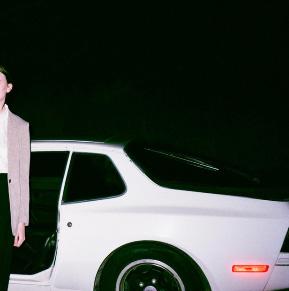
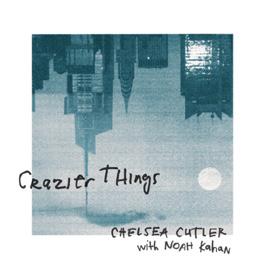



— a02413313@usu.edu


She’s Just a Friend Cardinal Bloom

Crazier Things
Chelsea Cutler, Noah Kahan



The Goo Goo Dolls Only


Q: What do you do research on?
A: Right now, I look at adolescent Black boys’ experiences in sport. Being Black myself and having experience coaching, I noticed that a lot of our young Black boys really invest a lot of time in sport.
Q: What other areas of the school are you involved in?
A: I was looking at marginalized student experiences on campus, and so me and my colleagues founded the Graduate Students of Color Association. It’s important that you know other people that look like you on campus, because a majority of people here are white.
Q: I understand that you also co-authored a book. What was it about?
A: “Adam: A story about roots, racism, and friendship”-- the genesis of it came up in 2020 in the aftermath of George Floyd with a lot of protesting going on around the country.
Q: What do you like about USU?
A: One of the things that I’ve enjoyed is the opportunity to be creative. I would also say the spirit here: I can feel this need for change at USU and this receptiveness and desire to change in turn. The ultimate thing I enjoy about USU is the challenges, the blessings, the positives, the negatives that have allowed me to grow as an individual in my own career.

Interested in hearing about outstanding students? The Utah Statesman is collaborating with Aggies Think, Care, Act to create a new column dedicated to featuring nominated Aggies.
Aggies Think, Care, Act is an initiative designed to help students get support and respect from their campus.
Katie Freeman, a supportive measures specialist with the Office of Equity, is one of the co-chairs of Aggies Think, Care, Act.
“Our overall goal is to promote this kind of culture of caring that upholds our principles of community,” Freeman said. “We try to identify needs and see if we need to give them to a certain office on campus that already exists. If there is a gap, we see if it’s something we can do or if someone else needs to fill that.”
The other co-chair is Karma Black, the assistant director of the Disability Resource Center. The two became cochairs last summer.
The initiative works with other organizations on campus to form the Aggies Think, Care, Act committee. The purpose of the committee is to ensure they are all upholding the same standards of respect, social responsibility and human dignity.
“We are composed of staff and faculty and a little bit of students,” Black said. “We help each group on the committee to do some informal review of what they’re doing to make sure that we are adhering to those principles of community and that we are thinking, caring and acting in all that we do.”
Abraham Rodriguez, USUSA student body president, takes part on the committee as a student representative and for the Student Involvement and Leadership Center. “We get together to learn how we can not only support each other in our endeavors, but really the whole goal of how we are embracing civic responsibility, and fostering a caring community that elevates the experience for all Aggies,” Rodriguez said.
According to Freeman, working as a co-chair has given her the opportunity to see progress in the campus community.
“I like my job because it’s very tangible,” Freeman said. “I like connecting with people all across campus who are interested in making progress and being able to have that long term vision for it.”
Rodriguez said this year, he has been passionate about Aggie stories.
The idea comes from Aggie Heroes, which was an event founded by the student body president in 2017, Michael Scott Peters.
“I used to be on a subcommittee, and we spotlighted Aggie Heroes,” Black said. “We’d want to celebrate them, but those attempts were annual events, and they weren’t super well-attended.”
According to Rodriguez, Aggie Heroes stopped in 2020, and after an attempt to bring it back last year, he started thinking about how to showcase students without making an event they would be unable to attend.
“We thought, ‘well, with the technology that we have nowadays and the way that we connect with one another, why not create a digital space where we can advertise nominating others that they feel exemplified standards,’” Rodriguez said.
A way to increase the amount of Aggies spotlighted in an accessible way is the collaboration between the Utah Statesman and the initiative. This will be shown as a new column in the paper as well as the digital edition of the Statesman.
Members of the committee are excited about the idea of a more regular spotlight that can showcase multiple students, so more voices are out there in a more accessible way.
“I think if there’s some kind of regular story, a reminder to think, care and act, those stories would inspire people to uphold those principles of community,” Black said. “It also provides a great representation for people.”
Another aspect of the digitization of Aggie stories is taking the Aggies Think, Care, Act pledge.
“The pledge is to learn more about the principles of community and make a pledge to do something to better our community,” Black said. “I think everyone has it within them to do something, and if we all do something, we’re going to feel more connected.”
Aggies Think, Care, Act is brainstorming ideas to possibly have more students on the committee in the future. To get more involved with Aggies Think, Care, Act, information can be found at usu.edu/think-care-act/.
To sign the pledge and to nominate outstanding students, visit usu.edu/think-care-act/principles-of-community.
“It’s always surprised me how much I get back from just giving into my community more so than when I’ve just focused on myself and my own goals,” Freeman said. “It’s so heartwarming when people are doing the best they can.”

Ella Stott is a first-year student studying English and journalism because she hates money. When she’s not writing, she’s watching sitcoms, eating Greek yogurt and admiring Nebraska corn.
— ella.stott@usu.edu
Sports movies hold a special place in the hearts of audiences worldwide. They embody perseverance, teamwork and the triumph of the human spirit.
In a survey posted on The Utah Statesman Instagram, 571 people voted for their favorite sports movie from the following choices: “The Sandlot,” “Remember the Titans,” “Space Jam,” “The Miracle Season,” “Bend It Like Beckham” and “The Mighty Ducks.”
Each of these movies have diverse settings and follow different sports, yet they share common threads of camaraderie, overcoming adversity and the power of sports to unite communities.
“The Sandlot,” directed by David Mickey Evans and released in 1993, is a nostalgic journey into the world of childhood and baseball and was the No. 1 voted movie with 211 votes (37%).
Set in the summer of 1962, it follows Scotty Smalls as he befriends a group of boys playing baseball on a sandlot. The film’s charm lies in its depiction of the
innocence of youth, coupled with the thrill of chasing dreams embodied by the legendary Babe Ruth’s signed baseball.
In contrast to the beloved movie of hometown baseball fans, “Remember the Titans” transports viewers to the racially charged atmosphere of 1970s Virginia, and was the No. 2 sports movie with a total of 178 votes. Based on a true story, it chronicles the integration of the T.C. Williams High School football team and the transformative journey of its players under the guidance of coach Herman Boone.
Through football, Boone and his assistant coach, Bill Yoast, bridge racial divides and instill values of respect, discipline and unity in their players.
Denzel Washington’s portrayal of Coach Boone is captivating, embodying the resilience and leadership necessary to challenge prejudice and inspire change.
“Space Jam,” released in 1996, takes a whimsical approach to sports cinema by blending live-action with animation, and ranked No. 3 with 17% of the votes.
Featuring basketball legend Michael Jordan alongside Looney Tunes characters, the film pits them
against alien invaders in a high-stakes basketball game to save the world. While it may not be hailed for its cinematic brilliance, “Space Jam” remains a beloved classic, combining nostalgia, humor and the thrill of seeing iconic characters come to life on the big screen.
“The Miracle Season,” directed by Sean McNamara and released in 2018, offers a poignant exploration of grief, resilience and the power of sports to heal.
Based on a true story, it follows the West High School girls’ volleyball team as they cope with the tragic loss of their star player, Caroline Found. Under the guidance of their coach Kathy Bresnahan, the team rallies together to honor Caroline’s memory and pursue victory against all odds.
Helen Hunt delivers a stirring performance as Bresnahan, capturing the emotional depth and determination driving the team’s journey.
“Bend It Like Beckham,” directed by Gurinder Chadha and released in 2003, breaks new ground by blending sports with themes of cultural identity and female empowerment.
Set in London, it follows Jess Bhamra, a young Indian woman with a passion for soccer, as she navigates familial expectations and societal norms to pursue her dreams. The film’s heartwarming portrayal of friendship, love and acceptance resonates with audiences, transcending cultural barriers and inspiring viewers to chase their aspirations unapologetically.
“The Mighty Ducks,” directed by Stephen Herek and released in 1992, offers a heartwarming underdog story.
When hotshot lawyer Gordon Bombay is sentenced to community service coaching a youth hockey team, he rediscovers his love for the game and mentors a group of misfits into a formidable team. Through teamwork and perseverance, the Ducks overcome personal obstacles and emerge victorious both on and off the ice.
Each of these movies offer a unique narrative and perspective while sharing the common themes of resilience, teamwork and the transformative power of sports.
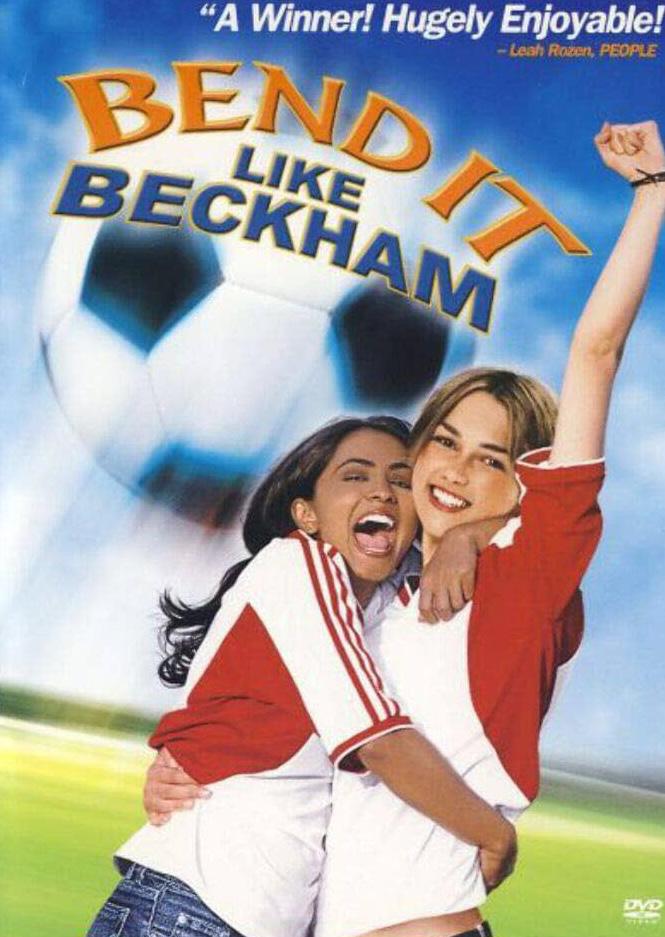

Whether it’s the nostalgia of “The Sandlot,” the triumph over adversity in “Remember the Titans,” or the cultural exploration of “Bend It Like Beckham,” these films remind us of the universal values uniting us as human beings.
As we cheer for the underdogs, shed tears of joy and sorrow and celebrate victories both big and small, we are reminded the true essence of sports lies not in the final score, but in the stories of the athletes and teams who inspire us to reach for greatness.

Addie Hemsley is a junior studying English creative writing and journalism. In her free time, she loves watching movies, reading, writing, hanging with friends and playing all types of sports.
There are three types of people in society: sheep, sheepdogs and wolves. Every time you leave your house unarmed and untrained, you are a sheep at the mercy of the wolves.”
On a blustery Saturday in March, I heard these words in a Marriott hotel in the Salt Lake City area. Leah Call and Caitlin Keith, my colleagues from The Utah Statesman, and I were not there for vacation — or for a screening of “American Sniper,” the film that popularized the sheep-sheepdog-wolf analogy that the instructor shared — but to take a concealed firearm permit class and better understand the legal and social environment surrounding guns in our state. Utah law
With the passage of HB0060 in 2021, Utah allows for “constitutional carry,” which means concealed carrying of a handgun, loaded or unloaded, does not require a permit.
“As long as you are at least 21 years of age or older, and you can legally possess firearms, you can carry it fully loaded,” said Jason Chapman, a concealed firearms permit supervisor at the Utah Bureau of Criminal Identification.
Although not required, a permit does come with
benefits. Valid for five years after issue, it allows a buyer to forgo the $7.50 F.B.I. background check that accompanies every firearm purchase.
It also authorizes gun owners to carry concealed in the 30 other states that recognize Utah permits. Provisional permits, which allow those aged 18-20 to conceal carry before they are 21, are also available.
The class had just over 20 people in attendance — several who looked college-age, plus some middleaged and older adults. Though there were a few people who raised their hands and asked questions, the majority of the class was like a lecture. Our instructor, Ben, introduced himself as a Marine and Army veteran who now works in digital security. He started the class by emphasizing four safety rules. First, he said, treat all firearms as if they are loaded. Second, never point your gun at anything you aren’t willing to destroy. Third, keep your finger off the trigger until your sights are on target. And fourth, be sure of your target and its environment.
Ben said when most people think of a situation that would involve a gun, they only think of one “battle.” In reality, he said, there are three battles: the violent encounter; the legal proceedings, both civil and criminal; and the mental and emotional toll.
A significant portion of the class was dedicated to the legal side, discussing the laws surrounding gun ownership, usage and consequences according to Utah code.
Ben also reviewed how to clean a gun and the various holster options to conceal a handgun on your body. He recommended that anyone carrying concealed also have a tourniquet handy.
“Big old bag of juice here. It runs out of juice, game over,” he said, gesturing to his body. “If you’re going to carry a gun, carry the life-saving stuff, too.”
Ben said the primary causes of firearm-related incidents are ignorance, complacency and carelessness, and he commended everyone in attendance for taking the initiative to get a permit.
“In this game, what you don’t know can kill you,” he said.
According to the Bureau of Criminal Investigation, concealed firearm permit holders are responsible for learning safe handgun practices. They should have practical knowledge of the laws that govern firearms and should understand their personal abilities and limitations.
The minimum training curriculum, which all instructors must teach, is meant to provide “general familiarity,” which includes safe loading, unloading, storage and carrying of concealed firearms.

It also asks that permit holders understand laws defining self-defense and use of deadly force, transportation and concealment.
While the bureau supports permit instructors including additional firearms training, like live-fire exercises, it is not required.
There was no individual instruction in our class, even with the plastic gun replicas. Ben did go over how to shoot, briefly discussing hand grip, stance, sight alignment and breath control, but it was demonstrative, not hands-on, and proportional to the rest of the content in the four-hour class, it was minimal.
The class was rife with political commentary by the instructor. Phrases like “That’s Biden money, not real money,” and “BLM or those terrorist rioters, whoever,” were spoken as if Ben automatically assumed everyone in attendance agreed with him. Sgt. Brady Zaugg, an investigator with the bureau, said instructors are required to cover the content in the minimum training curriculum, but as to political commentary, there are no guidelines.
““We make absolutely no mention of it,” Zaugg said. “Obviously, students do ask some of these questions, and we try to remain as neutral and impartial as possible. We make no endorsement of any kind of political party, political platform or anything like that.”
Zaugg said although instructors are licensed by the bureau, they are not employees of the state and can speak as private entities.
“We don’t specifically discourage them and say, ‘You cannot discuss certain political practices,’” Zaugg said. “If they fail to cover the minimum training curriculum, whilst they’re endorsing bad ideas, we can absolutely take action on their permit, but they are not employed by the state.”
If attendees of a class have concerns about its content or instruction, they can contact the bureau, which may choose to send someone to monitor the class.
“If we encounter bad curriculum, bad instruction, even if they cover most of the criteria — if they’re way off, then we will take corrective action as necessary, whether it’s guidance or suspension or revocation,” Zaugg said. Ben was knowledgeable, engaging and open to questions. But he had clear partisan opinions, which my colleagues and I felt overshadowed some of the course content.


After four hours of instruction, we left more familiar with guns, holsters and Utah code, and were provided with paperwork so we could send in our permit applications immediately. However, none of us felt nearly educated enough to purchase or operate a firearm. Ben did discuss the value in going to a gun range and trying out different models to find one that fits right, as well as practicing using a gun, but it was apparent that someone with enough confidence could acquire both a firearm and a permit without ever having to prove that they knew how to operate it safely.
Ben didn’t seem concerned about this. When we asked him if there were any barriers to his daughter carrying on campus at Utah State this upcoming fall, he shook his head no and responded proudly.
“Welcome to America.”
With contributions from Leah Call and Caitlin Keith.

— maren.archibald@usu.edu
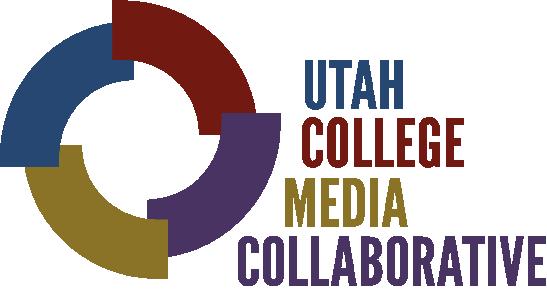
This story is jointly published as part of the Utah College Media Collaborative, a historic cross-campus project bringing together emerging journalists from Salt Lake Community College, the University of Utah, Utah State University and Weber State University. The collaborative is an Amplify Utah project with support from PBS Utah.
In the event of an active shooter, aggressor or emergency on campus, colleges and universities typically have a plan on how to communicate with students, faculty, staff and the community.
At Utah State University, this plan is Aggie Alert. Campus police use the system to disseminate information as quickly as possible through email and SMS text message. Alerts are only sent by authorized officers at the USU Police Department, said police Chief Jason Brei. Emergency alerts, he said, can be sent out as quickly as someone can get from a dispatch call to a computer.
Three types of alerts can be sent through the system — emergency notifications, crime alerts and safety alerts. Public safety officials, Brei said, use a decision matrix
to determine which alert will be sent depending on the situation.
Brei said one of the most important elements of an Aggie Alert is a call to action. Each message will end with a line of direction, like “avoid the area” or “remain in place.”
Emergency notifications, for example, are used when the health and safety of the campus community is immediately threatened by a situation like a gas leak, an active shooter, or a dangerous weather event. Crime alerts, also called timely warnings, are used for serious threats arising from criminal activity. Safety alerts are used for situations that require attention, but are less threatening. This includes events like power outages and university closures because of weather or an infectious disease.
“With staffing it can be challenging, because we send that [alert] out and now you have mom or CNN calling from the East Coast like ‘What’s going on?’, so you get bombarded,” Brei said. “We try to make the messages as distinct and direct as possible.”
When the danger or event has been contained or otherwise managed, an all-clear message is sent out.

UTAH STATE
3/6/24
- A unaccompanied dog was reported in the area around the library. Security Officers and fire marshals in the area were unable to locate the animal.
3/6/24
The University of Utah, Salt Lake Community College and Weber State University have similar systems in place.
Brei said campus police use the contact information students have on file with the university to send out Aggie Alerts, but students can opt-out anytime. Family or community members who wish to receive the alerts can also opt-in.
Brei stressed that if someone sees anything of concern while on campus,
-A model of a molecule was reported to have been taken from a restroom in the SER Building. The object is a green, silver and white replica of sodium chloride.
3/7/24
-An officer working a motor vehicle accident in the area witnessed an individual engaged in lewd behavior.
3/9/24
- USUPD, medical professionals and staff worked together to assist an individual who required emergency transportation after experiencing a health-related issue during an event.
they should call it in to the police. If someone calls for an Aggie Alert to be sent, officials will assess the situation and decide whether or not it warrants a response..
“If they’re talking about a person of color, or there are some things like, ‘OK, that’s not suspicious,’” he said. “When in doubt, we will send an officer to go check that out. We try to have that relationship and have that communication: see something, say something. If it doesn’t feel right, please let us know; we will come and take a look at it.”
When responding to an Aggie Alert, Brei said campus police adhere to the national standard and follow the ALERRT training model, or Advanced Law Enforcement Rapid Response Training. Brei added that the university has also implemented preventative measures to ensure the safety of attendees at large university events. Police will try to counter threats by interacting with the community, he said, and keeping a consistent presence on campus.
“At sporting events or at large venues we have staffing plans,” Brei said. “And we have incident command systems established so that we could have officers and specific areas for visual deterrence.”
With contributions from Maren Archibald and Caitlin Keith.

Leah Call is a senior studying print journalism. When she is not furiously studying the AP Stylebook, she enjoys listening to the Velvet Underground and reading the wise words of Patti Smith in her beloved blue hammock.
— leah.call@usu.edu

3/11/24
- A suspicious person was reported to USUPD. An officer located and met with the individual who was experiencing transportation issues. The individual gathered their belongings and left with no incident.
3/20/24
- Tobacco paraphenalia in possession of an underage person was recovered by an officer.
3/24/24
-Individuals reported to be fishing in a restricted area were reported to USUPD. The responding officer explained there was no fishing allowed in the area.
Mental health performance coach Riley Jensen has always had a passion for sports. He was a quarterback for Snow College in the 1996 season where the team went 8-2 and played in the Real Dairy Bowl. Jensen eventually transferred to Utah State University where his promising football career ended abruptly after a concussion.
“After that moment, the program changed,” Jensen said.
“My coach started playing the second-string quarterback in an attempt to rebuild.”
Jensen then became an offensive coordinator for Snow College for a short time. Afterward, he transitioned into a sales job with Stryker, a Fortune 500 company that sells medical equipment. Jensen said he was content with the job as it provided enough money for him and his young family.
Jensen’s wife, Georgann, saw more. He said she told him he was not living a fulfilling life as a salesman and challenged him about it.
“She said, ‘I don’t want to see you come through that door one more time doing a job that you hate,’” Jensen said. “‘You don’t want to do sales forever.’”
Jensen took the challenge seriously and re-evaluated. At age 39, he applied to the University of Utah and went on to earn his bachelor’s degree in sports psychology.
Jensen believes the change gave him a new life.
“I haven’t worked or studied a day in my life since going back,” Jensen said.
Since graduating, Jensen worked as a performance coach for many programs including Weber State University. But after about five years, Jensen took an opportunity that brought him back to Utah State.
Right now, Jensen is providing weekly support methods for the Utah State women’s tennis team.
Jensen’s support program is built on six pillars of support which he describes as “preventative medicine rather than reactive medicine.” Those pillars are focus and concentration, managing sports anxiety, mindfulness, self-talk, constructing routines and emotional management.
At the start of the season, he began with structured methods that addressed each pillar individually. He wanted to be sure everyone on the team understood how to interact with him. But as time went on, it became more focused and individualized for the players.
“He looks at how we feel in the moment,” said junior tennis player Indya Nespor. “Now if we need to focus on one thing specifically, we can talk to him.”
Nespor said an important pillar for her has been developing good routines.
“Everyone has an emotional state when they play,” Nespor said. “For me, it’s about staying calm. So I have a routine playlist that I listen to that helps me get locked in.”
Nespor said Afrobeats and exciting country are what help her out the most. Her current jam is “Love on Me” by Jtbazz.
“When I listen, I find it easier to concentrate on the game ahead,” Nespor said.

Because Jensen’s program is as-needed and individualized, the tennis players find success comes more naturally because they can focus on what is affecting them rather than focus on something that may already be under control.
“Mental health and strength really matter in tennis and as a student,” said fifth-year Zeynep Naz Ozturk. “I can be so hard on myself after losses.”
For this, Jensen has Ozturk focus on the managing stress pillar.
“What that means is focusing on controlling the things that I can control,” Ozturk said.
These methods have helped Ozturk achieve an overall good record for her individual matches.
“It’s important to remember that focus keeps us going,” Jensen said. “It’s easy to lose focus when things are going well for us. So, having a goal that keeps your focus on success is important.”
“It’s helped me stay focused,” said tennis player Laura Fernanda Eugenio De Hilario. “The double-breath breathing technique keeps me in my routine.”
De Hilario had a difficult season last year. She finished 2-10 as the fourth player in rotation. During her time with Jensen, De Hilario has worked on improving her focus. Jensen gave her a double-breath breathing technique she uses, and a journal routine. This is intended to keep her focused on the goals she has for tennis and academics.
This season, she has moved up to third player and has started out strong, going a perfect 4-0 in her rotation.
“Tennis is a lot of ups and downs,” De Hilario said. “Being aware of that, and giving it 100% is the goal. But also, being aware that we aren’t perfect and can make mistakes.”
One thing the players expressed appreciation for is Jensen’s extensive knowledge of tennis.
“My dad was a tennis coach here at USU when I was young,” Jensen said.
Having exposure when he was young and consistently playing tennis with his father and against the wall gave him a strong respect for the sport.
Jensen takes pride in his job. He said he is always striving to do his best each day — just like the athletes he works with.
“When I look into the eyes of the athletes, I remember my time,” Jensen said. “I get just as much of a thrill when they are successful as they are. I know how much work goes into it, and what it means to them.”

Brian Kirk is a human sophomore studying journalism. When he is definitely not abducting cows, he enjoys sports, board games and Godzilla movies.
brian.kirk@usu.edu
As most students at Utah State are fighting to get through each semester with good grades, USU’s boxing club members are learning how to become better fighters in the ring.
The boxing club began in spring 2023, making it one of the newer athletic clubs on campus. After being founded by former student Scott Swain, the reins were handed to the current club president, Gabe Aina.
Boxing might not be the most common sport for kids to grow up learning, but ever since Aina started in high school, his love for the sport has grown.
“I’ve been boxing for like six or seven years now. My dad boxed for the Air Force Academy, and he taught me when I was in high school. I’ve just been keeping it going ever since,” Aina said.
Aina said he loves to box because it allows him to exercise and take his mind off everything else going on in his life.
“It’s very good exercise. It’s an insane source of cardio. You just feel really good when you do it,” Aina said. “Students have crazy lives and being able to blow off steam and have a good community with the club is super important to a lot of us. Overall, it’s just fun to move your body in a way that feels fluid and strong.”
Aina said he has noticed the sport help him become better at other things outside of the ring.
“It instills a sense of discipline, like any martial arts. That kind of practice where you’re focusing on form, it translates into other things,” Aina said.
The club currently doesn’t compete in any competitions with other schools or clubs, but Aina says the goal of the club isn’t necessarily to host fights.
“We’d love to compete if we could, but there’s not really a college boxing scene in Utah, let alone Cache Valley, so unfortunately that’s not an option,” Aina said. “In boxing club, our primary goals are just to teach people techniques and share information and passion because it’s really good for self-defense and exercise. We want to just be an extra resource for college students.”

Although Aina has several years of experience, he says the skillset of members of the club varies greatly.
“Usually most people start with knowing nothing at all. But the more people show up, the better they get, which I’m glad happens. That’s what we want to see in our members,” Aina said.
Club member Gavin Winkler, a first-year student studying environmental science and sustainability, met Aina at a Super Smash Bros. tournament at the start of the last fall semester before accepting an invitation to join the club and start boxing. Despite not having any prior
experience, Winkler decided to keep attending club practices.
“I needed a new way of working out. I usually weightlift, but this was something different and it was more challenging in a different way, so I kind of want to start doing both at the same time,” Winkler said. The club also serves as an opportunity to meet new people and make friends. For a first-year student like Winkler, the community alone was enough reason to keep participating.
“I stayed because I wanted friends. I didn’t know anyone, and I just wanted the social interaction that came with it. I met some really great friends here,” Winkler said. “Then I actually started picking it up and I actually started liking it more, and that love for boxing kind of just grew.”
Because many students, like Winkler, have never boxed before, Aina says the club doesn’t require any equipment or charge any fees to its members.
“We’re focused on just extending our knowledge and our passion for boxing, and we’re not shaming anyone for not having any equipment or previous experience,” Aina said. “Just like a drawing club, or a chess club, or a hacky sack club, you don’t join them because you know everything. You join them because you are interested and want to get better.”
More information about the boxing club can be found online at my.usu.edu/groups/boxing-club/info.

Wright is a junior studying political science, American studies and anticipatory intelligence. He loves to travel, watch sports and spend time outdoors.
— henry.wright@usu.edu



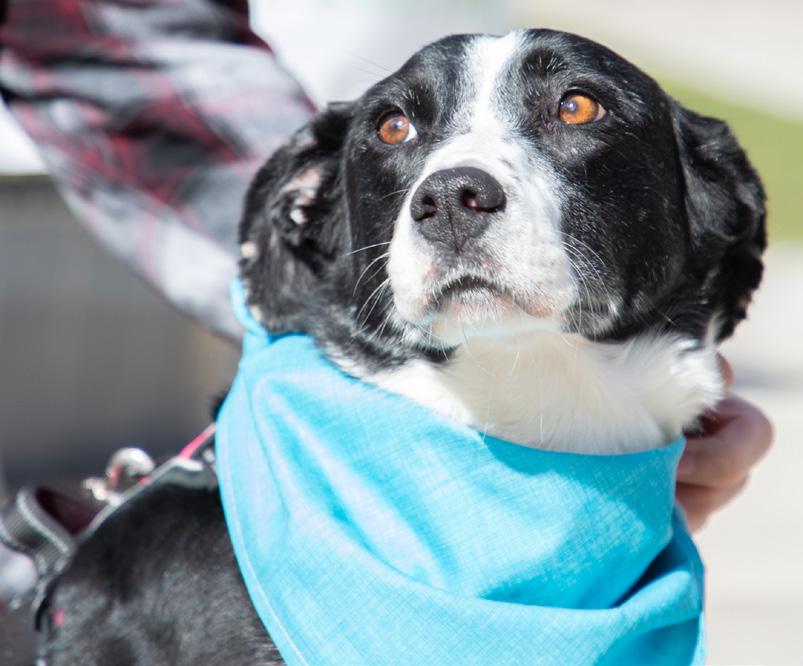
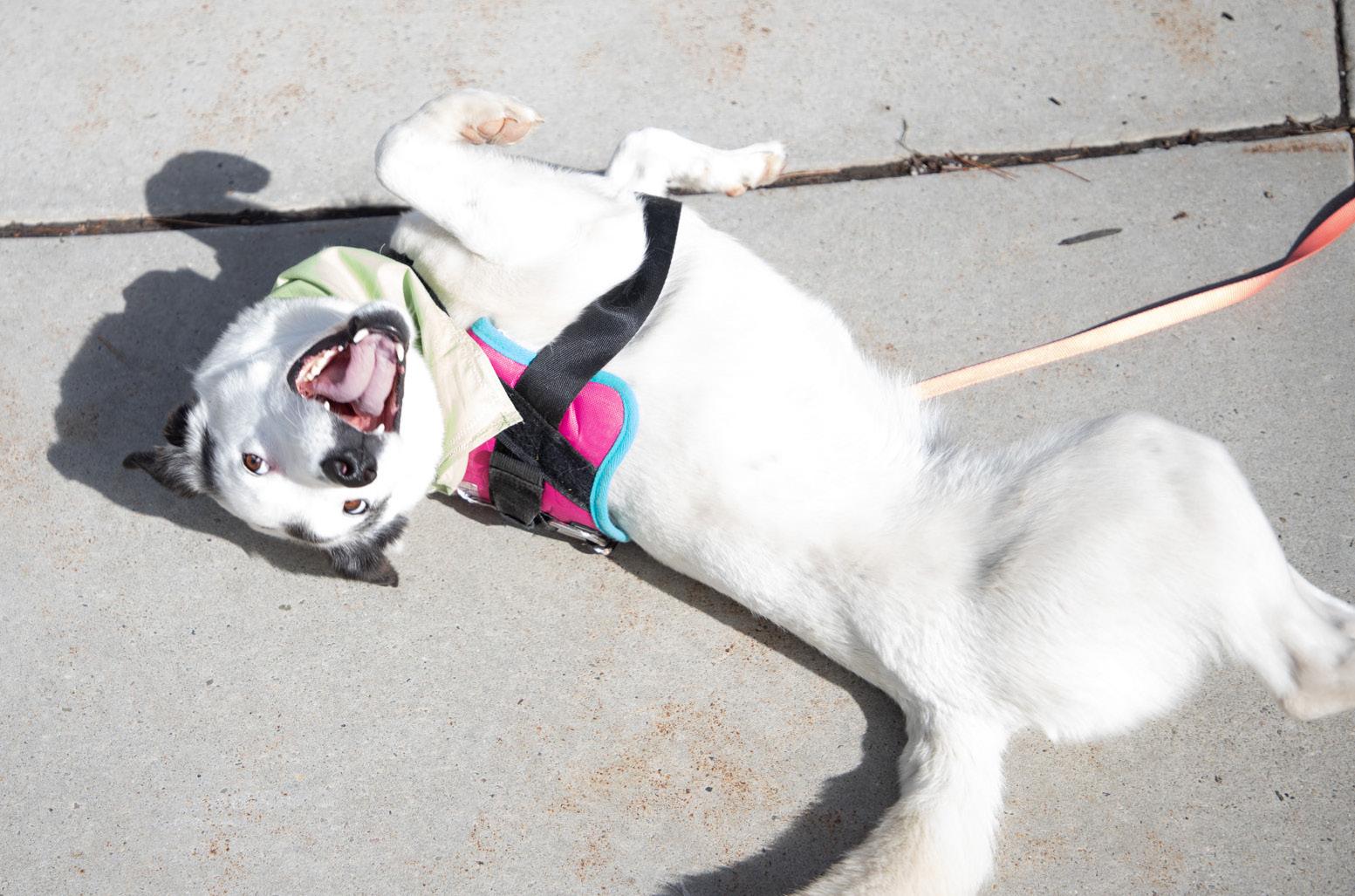


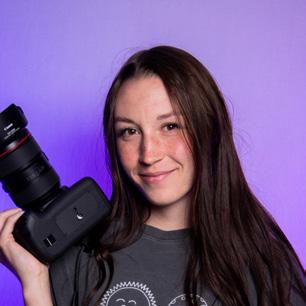
Heidi Bingham is a senior studying journalism. She has a camera, and she uses it sometimes.
— heidi.bingham@usu.edu

The mystery of life isn’t a problem to solve, but a reality to experience.”
Like many people, I had never heard of “Dune” until the first movie came out in 2021. Despite that movie’s impressive and iconic cast and great reputation, I never had much interest in the movie or in the book. But with this year’s release of “Dune: Part 2”, the buzz around the movies became almost inescapable and I decided it was time to see what all the fuss was about. But before watching either of the movies I wanted to read the book, to be able to compare and contrast.
“Dune,” written by Frank Herbert, is not just a sci-fi epic but also an interesting commentary on how religion affects
the Harkonnens, led by Baron Vladmir Harkonnen, had ruled the planet for decades. Upon arriving on the planet, the duke and his men are aware they are most likely walking into a trap and prepare themselves to go against the Harkonnens or even the emperor’s men. But are they prepared enough?
Paul’s mother, Lady Jessica, is a trained Bene Gesserit, a group of mystical witch-like women with strange powers. Jessica has begun to train Paul in the Bene Gesserit ways, and there are suspicions Paul might be one of great powers the witches have been waiting for for generations.
I must not fear. Fear is the mind-killer. Fear is the little-death that brings total obliteration. I will face my fear. I will permit it to pass over me and through me.
— Frank Herbert
Paul is 15 when the book starts. His life has been spent preparing to be the duke after his father, this includes elite education and combat training. He is young and curious and strives to be a great leader like his father, who cares greatly about his people. This, mixed in with the witch training from his mother, starts off an intriguing character arc for Paul.
Another important
continues to fight his way to the top, no matter what he is faced with or what the consequences are.
“I must not fear. Fear is the mind-killer. Fear is the little-death that brings total obliteration. I will face my fear. I will permit it to pass over me and through me.”
A fascinating yet frustrating part of the story is the power dynamics between the emperor, the Harkonnens and the Atreides as each entity strives to gain and maintain power. The Fremen end up stuck in the middle of this power struggle.
Throughout the book, we see Paul grow and take power. It’s most interesting to see how he acts towards a group of people who believe he could be their savior. The religious aspects of the book are fascinating as we see the Fremen come together with their faith in Paul, and what that faith in him does to their civilization and Arrakis as a whole.
society and power imbalance affects politics. The “chosen one” trope is also a prominent aspect of the book.
I admit I was skeptical of the book at first, but in the end, it was a very engaging read and overall an enjoyable experience. Herbert does a great job at world building in a unique way, and on top of that, he created some interesting characters within a compelling storyline.
The “chosen one” in this book is the young Paul Atriedes, the son and heir of Duke Leto Atreides. The Atreides family has ruled over their home planet of Caladan, but they have now been commanded by the emperor to move their rule to the planet Arrakis.
Arrakis is very different from the Atriedes’ home planet. Also known as Dune, Arrakis is a desert planet covered in sand where water is very scarce. Based on the descriptions, I pictured Arrakis as similar to the planet Tatooine in “Star Wars.” But Arrakis is also home to spice, one of the most valued substances in the universe.
The Atriedes took over Arrakis after their archenemies
group are the Fremen, the native people of Arrakis, who live deep in the desert and have adapted to survive with limited water and in harsh conditions.
It is easy to compare the Fremen to native civilizations here on Earth whose lands were taken over and controlled by outsiders, such as Native Americans. The Fremen stand out because the emperor and the Harkonnens expected them to be a powerless tribe, when in reality, they’re a massive civilization who had adapted to a nearly inhabitable landscape and created some incredible technologies to help them survive and gain power.
Because of old traditions and prophecies, many given to them by the Bene Gesserit missionaries, many of the Fremen believe Paul is the Messiah they have been waiting for for generations that will free them and Arrakis from the oppression of outworlders.
The book focuses on Paul as he works to bring House Atreides to power once again. Herbert shows how Paul is shaped by the extreme circumstances he is placed in. Paul
It is apparent how much the expectations of others affected who Paul became. Because of the expectations of being a duke just like his father, the Fremen’s expectations for him to be their Messiah and the Bene Gesserit’s expectations for him to be basically all-powerful, the Paul at the beginning is very different from the Paul at the end of the book. This gave a very interesting perspective into how people change and become. There is also a lot to learn from seeing how the characters react and the decisions they make in times of desperation and crisis.
Though the book shows aspects of society that we have all seen and can relate to, it is still sci-fi and there are a lot of aspects we will never see in our world. From giant sandworms and spaceships to seeing into the future and Bene Gesserit mind control, the world of Dune is eye-catching, unique and full of imagination.

Caitlin Keith relates to Anne of Green Gables when she said, “I can’t be perfectly happy. Nobody could who had red hair.”
— c.keith@usu.edu

Sudoku puzzles are provided by www.sudokuoftheday.com.
Last week’s solution:

Wake up! Get paid 100% vs 55%. Trade a dollar for 8% and become wealthy TAX FREE in insurance, with the extra 45%. All I need is a copy of your license in order to pay you. Most important let me show you how you can have a salary plus commission, instead of commission only. You don’t sell a single policy with my program you are investing in Life Insurance. Call Herb (435) 799-1504!


